Occupational safety training for working in a nuclear power factory
99,000 ₫
Note: The above price is calculated per person, and the price may fluctuate depending on the number of participants in the course and market movements. For more accurate pricing support, please refer to the price list or contact our consulting staff directly.
Occupational safety is an important issue at the nuclear power factory and needs to be addressed promptly to ensure the health and safety of workers and enhance the reputation of businesses there. The Occupational Safety Training course by An Toan Nam Viet is one of the effective solutions to raise awareness about preventing workplace accidents for workers in the nuclear power factory.
Table of Contents
Toggle1. Overview of Nuclear Power Factories
a. What is a Nuclear Power Factory?
A nuclear power factory is an industrial facility constructed to generate electricity by utilizing the nuclear fission process. In a nuclear power factory, elements such as uranium or plutonium are used as fuel to produce nuclear energy. This process, known as nuclear fission, involves splitting fuel atoms into smaller molecules, generating high temperatures and triggering a chain reaction.
The nuclear fission generates high heat, which is used to convert water into steam. This steam then drives turbines to generate electricity. This process is called nuclear power generation, producing a significant amount of electricity without emitting gases such as carbon dioxide, a major contributor to greenhouse effects and climate change.
Nuclear power factories require very strict safety measures to ensure the safety of workers and the surrounding environment. These factories typically have continuous control and monitoring systems to ensure that the nuclear fission process occurs safely and efficiently.

b. Companies within Nuclear Power Factories
There are many companies and organizations involved in the operation of a nuclear power factory. Below are some examples of key companies and organizations in the nuclear power sector:
- Nuclear power companies: These companies operate in the development, construction, and operation of nuclear power factories. Examples: Westinghouse Electric Company, Framatome, Rosatom, General Electric, Toshiba.
- Uranium mining companies: These companies are responsible for mining uranium, the primary fuel for many nuclear power factories. Examples: Cameco, Kazatomprom, Rio Tinto, BHP Billiton.
- Nuclear waste transportation and management companies: These companies specialize in safely transporting, processing, and storing nuclear waste from nuclear power factories. Examples: Waste Control Specialists, Studsvik, Perma-Fix Environmental Services.
- Nuclear equipment companies: These companies supply equipment, components, and technology for nuclear power factories. Examples: Siemens, Mitsubishi Heavy Industries, AREVA NP, Hitachi-GE Nuclear Energy.
- Nuclear regulatory organizations: These organizations manage and oversee the nuclear power sector, ensuring compliance with nuclear safety regulations. Examples: International Atomic Energy Agency (IAEA), Nuclear Regulatory Commission (NRC) (USA), Atomic Energy Regulatory Board (AERB) (India).
- Nuclear consulting and research companies: These companies provide consulting and research services on technical, safety, and environmental aspects of nuclear power. Examples: Bechtel, SNC-Lavalin, Studsvik.
These are common examples and do not list all companies operating in the nuclear power manufacturing sector. The involvement and organization of companies may vary depending on the country and scale of the nuclear power factory.

2. Overview of Safety Training at Nuclear Power Factories
a. What is Occupational Safety Training?
- Occupational safety training is an intensive training program on workplace safety for individuals working in industrial, construction, manufacturing, and other high-risk occupations. This training is organized by An Toan Nam Viet’s occupational safety training centers at nuclear power factories.
- During the course, trainees are provided with the necessary knowledge and skills to ensure the safety of themselves and their colleagues while working. Topics covered include labor safety regulations, identification and assessment of potential hazards, methods for inspecting and maintaining safety equipment, first aid skills, and emergency response procedures.
- For businesses, providing occupational safety training for employees not only enhances their capacity and efficiency but also ensures compliance with labor safety laws and minimizes the risk of workplace accidents.
REGISTER FOR OCCUPATIONAL SAFETY TRAINING SERVICE
b. Training Duration
Occupational safety training duration depends on various factors such as the type of work or sector. However, the exact total training time for each group is regulated in Article 19 of Decree 44/2016/ND-CP
- Group 1: 16 hours
- Group 2: 48 hours
- Group 3: 24 hours
- Group 4: 16 hours
- Group 5: 16 hours
- Group 6: 4 hours
c. Training Content
Occupational safety training content includes the knowledge and skills necessary to minimize workplace accidents, ensuring safety for workers and company assets. Specifically, occupational safety training may include:
- Knowledge of labor safety laws and regulations of the state and enterprises.
- Understanding potential hazards and types of workplace accidents.
- Skills and methods for using personal protective equipment and collective protective equipment.
- Methods to reduce workplace accident risks and ensure safety during work.
- Handling dangerous situations and organizing rescue operations in case of accidents.
- Knowledge of maintaining a safe working environment.
Additionally, training content may be adjusted according to specific industries and working conditions.
d. Occupational Safety Training Certificates
Occupational Safety and Hygiene Training Certificate
- The certificate template is specified in Form 08, Appendix II of Decree 44/2016/ND-CP and is issued for Groups 1, 2, 5, and 6.
- The certificate measures 13 cm x 19 cm, with a sky-blue cover.

- The content of the front side is shown in the image above
- The back has a white background with content as shown below.

- The safety card template is detailed in Form 06, Appendix II of Decree 44/2016/ND-CP
- Group 3 workers are issued an occupational safety card (commonly referred to as a Group 3 occupational safety certificate).
- The card measures 60 mm x 90 mm, with front and back content displayed as shown below.

The employer may issue a Group 3 safety card to a trainee after the trainee passes the assessment and there is an employment contract between both parties.
- The logbook template for Groups 1, 2, 5, and 6 is detailed in Form 09, Appendix II of Decree 44/2016/ND-CP.
- The logbook template for Group 3 is detailed in Form 10, Appendix II of Decree 44/2016/ND-CP.
- The logbook template for Group 4 is detailed in Form 11, Appendix II of Decree 44/2016/ND-CP.
- Group 4 is only issued a logbook without a Group 4 safety certificate.
- The content of the Group 4 logbook is shown in the image below.

3. Employment Opportunities at Nuclear Power Factories
Employment at nuclear power factories can be diverse, covering various roles. Below are some examples of jobs in this field:
- Nuclear engineers: Responsible for designing, constructing, and operating nuclear systems and equipment. Their work may include safety supervision, performance optimization, and troubleshooting technical issues.
- Nuclear safety personnel: Ensure compliance with safety regulations and procedures within the factory. They perform inspections, assessments, and monitoring to ensure worker and environmental safety.
- Nuclear waste technicians: Handle the safe processing, transport, and storage of nuclear waste from the factory. They follow strict procedures and regulations to ensure safety and environmental protection.
- Factory operation technicians: Work directly within the factory to control and manage the nuclear fission process and power systems. They perform monitoring, maintenance, and troubleshooting activities.
- Supervision and inspection specialists: Conduct monitoring, inspection, and verification of nuclear system performance, ensuring the factory operates according to regulations and international standards.
- Research and development personnel: Conduct research, analysis, and develop new technologies in the nuclear power manufacturing sector. They seek to improve factory efficiency, safety, and sustainability.

4. Main Causes of Workplace Accidents in Industrial Parks
The main causes of workplace accidents in industrial parks include:
- Failure to meet occupational safety standards: Some industrial parks do not meet safety standards or lack sufficient personal protective equipment for workers.
- Insufficiently trained employees: Some workers are not adequately trained in occupational safety and do not know how to use personal protective equipment.
- Lack of safety equipment: Some industrial parks lack safety infrastructure such as ladders, railings, emergency exits, and fire-fighting systems.
- Lack of supervision: Some parks do not have sufficient safety monitoring staff, or supervision is not thorough, with irregular checks of equipment and safety systems.
- Excessive working hours: Some workers work too long without adequate rest, causing fatigue and mistakes during work.
- Non-compliance with safety regulations: Some workers do not follow safety rules or fail to wear full protective equipment, leading to workplace accidents.
5. Measures to Control Occupational Accidents in Nuclear Power Factories
Controlling occupational accidents in nuclear power factories is crucial to ensure the safety of workers and the surrounding environment. Below are some common measures to ensure labor safety in this field:
- Compliance with safety regulations: Nuclear power factories must comply with nuclear safety regulations issued by the national nuclear regulatory authority. These regulations include standards for design, construction, operation, and maintenance.
- Training and education: Workers in nuclear power factories need to be fully trained and educated on occupational safety and the specific safety procedures applied in a nuclear environment. Training should include knowledge of accident prevention, emergency response procedures, and the proper use of personal protective equipment.
- Risk control: Nuclear power factories need to conduct labor risk assessment and control processes. This includes identifying potential hazards, establishing risk control measures, and ensuring that safe work procedures are followed.
- Equipment inspection and maintenance: Equipment in nuclear power factories must be regularly inspected and maintained to ensure safe and efficient operation. Sensors, machinery, and other safety devices must be checked, calibrated, and maintained according to proper procedures.
- Incident management: Nuclear power factories must have detailed emergency response plans to deal with critical situations. Staff must be trained to handle incidents safely and effectively, and an incident reporting system must be in place to provide timely alerts and responses.
- Periodically conduct occupational environment monitoring in factories, collect and analyze harmful factors affecting workers, and then adjust to reduce risks to prevent occupational diseases for them.

6. Benefits of Occupational Safety Training
An Toan Nam Viet provides your business with the following excellent benefits after completing occupational safety training courses in accordance with Decree 44/2016/ND-CP regarding occupational safety and hygiene for companies, factories, and enterprises:
- Workers can identify potential occupational accident risks and take preventive measures to avoid accidents.
- Your business can establish risk prevention measures in manufacturing, operation, and maintenance processes.
- Minimize costs when occupational safety risks occur.
- Continuous manufacturing without interruptions helps increase labor productivity and product quality.
- Compliance with labor safety laws to avoid legal risks.
- Enhance reputation and professionalism in all aspects, thereby elevating your business brand.
Nam Viet’s training courses are solutions to prevent external factors from impacting individuals, helping them avoid dangers that could lead to injury or, in severe cases, death.
REGISTER FOR OCCUPATIONAL SAFETY TRAINING SERVICES
7. Customer Feedback After Completing the Training Course
An Toan Nam Viet has many years of experience accompanying numerous businesses in Vietnam in general, and in the southern provinces in particular. This responsibility is extremely valuable to An Toan Nam Viet, which is why its Occupational Safety Training has become increasingly professional. The motivation for An Toan Nam Viet’s growth comes from positive feedback and suggestions from enterprises. Below are some feedbacks from our valued partners.
Bac Nam E&C Investment & Construction Joint Stock Company
“The first time using An Toan Nam Viet’s service, I was very surprised by the 24/7 support from the consulting team. The class organization was very quick and convenient for our company. Thank you very much for An Toan Nam Viet’s service!”
Hoa Dat Construction and Trading Joint Stock Company
“An Toan Nam Viet’s service has greatly helped us simplify occupational safety and complete safety documentation for the work process. The consulting team is enthusiastic and timely in responding to our inquiries. Five stars for An Toan Nam Viet.”
See more customer interviews after using our services at An Toan Nam Viet
8. An Toan Nam Viet’s Occupational Safety Training Capability
An Toan Nam Viet is a reputable and high-quality occupational safety training center in Vietnam. Safety training sessions are conducted continuously at manufacturing workshops, factories, or construction sites across the country (63 provinces in Vietnam).
REGISTER FOR OCCUPATIONAL SAFETY TRAINING SERVICES
Occupational Safety Training License
- An Toan Nam Viet has been inspected and certified by the Department of Safety under the Ministry of Labor – Invalids and Social Affairs, granting a certificate of eligibility for occupational safety and hygiene training. This further strengthens our occupational safety training capabilities.

Materials and Lectures
- Before being included in occupational safety training courses, the training materials are reviewed and approved to ensure accurate knowledge and practical application.
- The instructors’ teaching methods are standardized according to An Toan Nam Viet standards, developed by experts in occupational safety and hygiene training to maximize knowledge absorption for trainees.
Facilities
- Controlling classroom factors that affect training enhances teaching efficiency and knowledge absorption.
- Our training facilities are spacious and meet standards for area, lighting, and training equipment, etc.
9. Nationwide Reputable and Quality Safety Training Center
At An Toan Nam Viet, we prioritize the profession of occupational safety training. For us, imparting self-protection knowledge to workers equips them with safety on their livelihood path and contributes to national development.
To ensure effective training, we carefully prepare every detail, from tools and teaching equipment to curriculum, materials, audio, and lighting.
Our occupational safety instructors are experienced experts in the field, with research on hazard identification across industries and preventive methods.
Lectures are practical and conveyed vividly to workers, making it easier for them to absorb knowledge. Training content is strictly aligned with Decree 44/2016/ND-CP.
Workers learn various preventive measures and self-protection techniques, applying them appropriately in real work situations.
Our training center is proud to offer professional and reputable occupational safety training with the following advantages:
- Competitive training costs while maintaining quality.
- Flexible training schedules tailored to company manufacturing.
- Quick and compliant certification procedures.
- Instructors with extensive industry experience.
- Classroom factor control to enhance teaching efficiency and knowledge absorption.
- Lessons tailored to occupational safety in enterprises.
- An Toan Nam Viet provides dedicated, professional support to clients accurately and quickly.

10. Additional Occupational Safety Training Resources
- Occupational safety materials for working in nuclear power factories
- Complete set of occupational safety training materials
- Occupational safety training test set
- Occupational safety multiple-choice test for nuclear power factories
- Occupational safety training slides for nuclear power factory work
1 review for Occupational safety training for working in a nuclear power factory
No comments yet

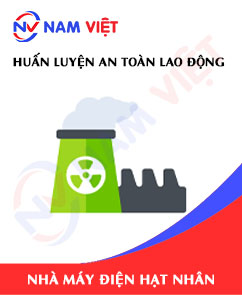
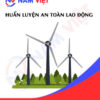
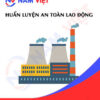



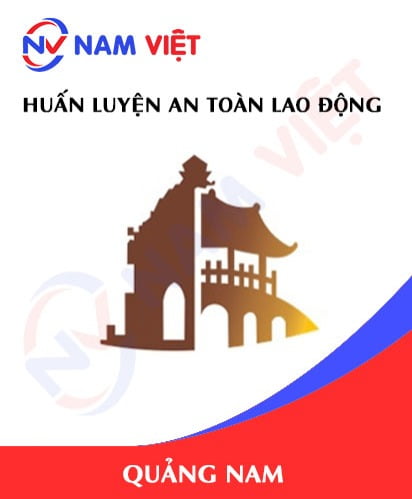
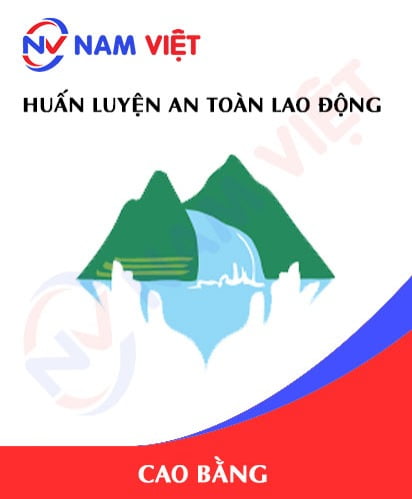

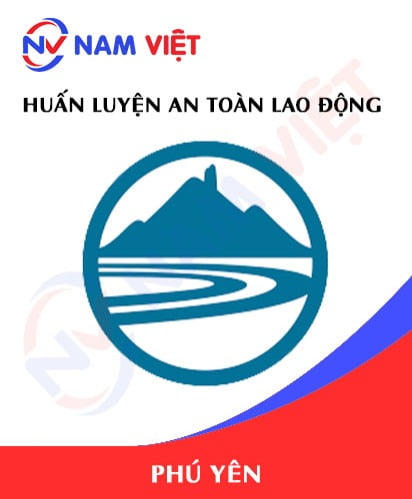
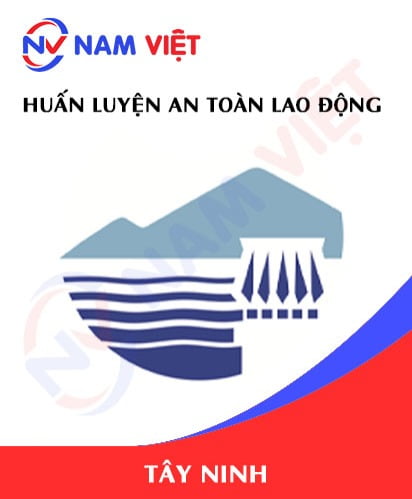

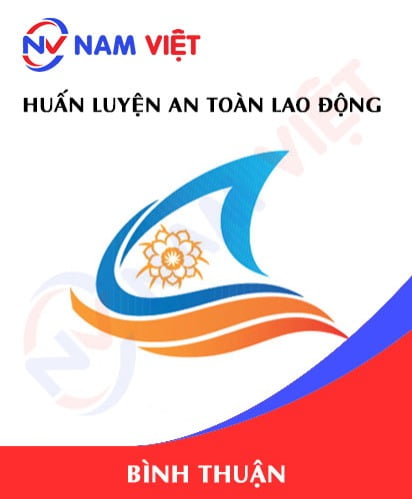

caotiensyhung.07081999
Dịch vụ huấn luyện an toàn lao động rất tốt nhé, giảng viên dạy rất sinh động dễ hiểu!